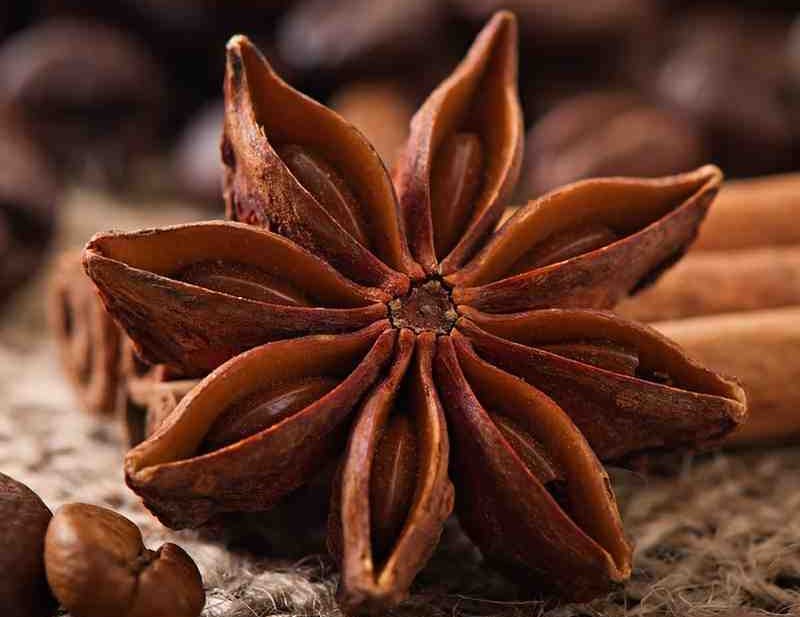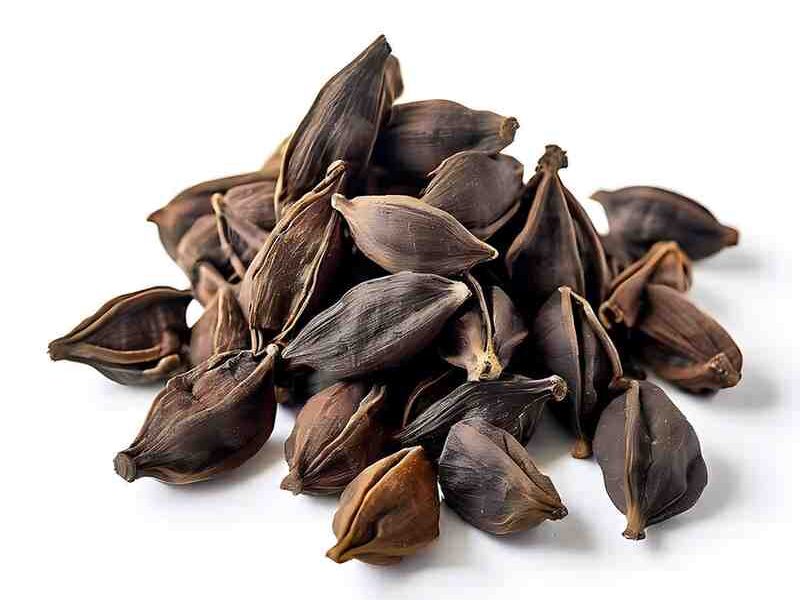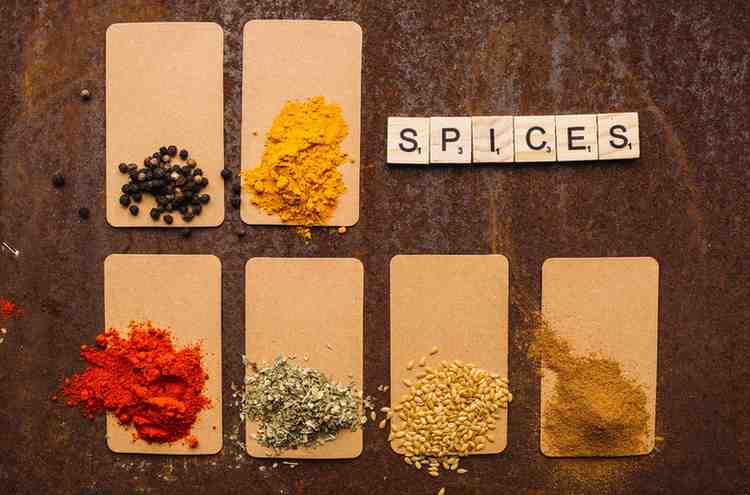Chinese Five Spice, also called Wuxiang Fen, is a traditional spice blend from China, used for centuries in Chinese cuisine. Known for its unique balance of flavors, Five Spice represents the five fundamental tastes of Chinese culinary tradition: salty, sweet, sour, bitter, and pungent.
- A Unifying Element: Found in various Chinese regions, from Sichuan to Cantonese cuisine, Five Spice unifies the diverse flavors of China.
- Complex Flavor Profile: This blend enhances a variety of dishes, from meats and stews to marinades and sauces, offering a complex yet harmonious taste.
- Global Appeal: Today, Five Spice is popular worldwide, appreciated for its depth and versatility.
Whether you’re cooking classic Chinese recipes or experimenting with fusion dishes, Five Spice adds a layer of warmth and complexity that is distinctly Chinese.
Origins and Historical Background of Chinese Five Spice
Chinese Five Spice’s origins date back to ancient China, where it was developed as a way to balance the five essential tastes. This balance of flavors is rooted in traditional Chinese culinary philosophy, which emphasizes harmony in taste and health benefits.
Historical Significance and Development
Five Spice’s journey through history reflects China’s cultural and culinary evolution:
- Origins in Chinese Medicine: Early Chinese herbalists believed the blend promoted balance within the body, aligning with the principles of Traditional Chinese Medicine (TCM).
- Spread Across Chinese Regions: As China’s cuisines developed, regions like Sichuan, Canton, and Hunan adopted Five Spice into their unique styles.
- Symbol of Harmony: Representing the balance of flavors, Five Spice became a staple in households and local markets, symbolizing the harmony sought in both food and life.
Influence on Regional Chinese Cuisine
Chinese Five Spice’s versatility allows it to blend well with various regional flavors across China. Each region uses Five Spice in its own unique way:
- Sichuan Cuisine: Known for its bold, spicy flavors, Sichuan uses Five Spice to add depth and aroma to dishes like Sichuan-style braised pork.
- Cantonese Cuisine: Cantonese chefs use it more subtly, often adding Five Spice to marinades for roast meats and stir-fries.
- Hunan Cuisine: Known for its smoky and spicy dishes, Hunan cuisine uses Five Spice to balance heat with warm, aromatic notes.
This regional adaptability has helped Five Spice remain an essential part of Chinese cooking, enhancing both local and national flavors.
Ingredients in Chinese Five Spice and Their Flavor Profiles
The traditional Chinese Five Spice blend combines five main spices, each contributing a unique taste and aroma. Together, they create a complex yet balanced profile that embodies Chinese culinary philosophy.
Core Ingredients

The five classic spices in Chinese Five Spice each bring distinct qualities to the blend:
- Star Anise:
- Sweet, with a licorice-like aroma.
- Adds depth and warmth, balancing savory flavors.
- Sichuan Peppercorn:
- Provides a slight numbing sensation and a mild heat.
- Creates a tingling, unique effect that defines many Chinese dishes.
- Cloves:
- Warm, sweet, and intense.
- Introduces a spicy sweetness that enhances both meat and vegetable dishes.
- Chinese Cinnamon (Cassia):
- Sweet and spicy with a bit of heat.
- Adds a comforting warmth that balances sharper flavors.
- Fennel Seeds:
- Earthy and sweet, with hints of licorice.
- Complements star anise, bringing a subtle sweetness to the blend.
Each spice contributes to the Five Spice’s balanced taste, ensuring that no single flavor overpowers the others.
Variations in Five Spice Ingredients Across China

While the five traditional spices form the core of Five Spice, some regions modify the blend by adding local ingredients. These variations reflect local taste preferences and seasonal availability:
- Additional Spices:
Each region’s adaptation of Five Spice allows it to fit seamlessly into diverse Chinese dishes, providing both familiarity and variety.
The Art of Balancing Flavors in Five Spice
Creating the perfect Five Spice blend involves understanding how to balance flavors effectively. Each spice has a specific role, and the ideal mix brings out the best in every ingredient without overshadowing others.
Achieving Harmony in Taste
The balance of salty, sweet, sour, bitter, and pungent flavors gives Chinese Five Spice its unique versatility:
- Salty: Although Five Spice doesn’t contain salt, it pairs well with salty sauces like soy sauce, enhancing its savory profile.
- Sweet: Fennel seeds and star anise provide natural sweetness, softening the blend’s bolder flavors.
- Sour: Citrus notes from tangerine peel (in regional variations) add a slight tang, bringing freshness.
- Bitter: Sichuan peppercorn’s slight bitterness balances the blend, adding depth.
- Pungent: Cloves and cassia bring warmth, with clove’s intensity lifting the blend’s aroma.
This balance makes Five Spice a powerful yet versatile addition to a range of dishes, offering a flavorful foundation that complements both meat and vegetarian options.
Tips for Making Homemade Chinese Five Spice
Although Five Spice is readily available, making your own allows you to adjust the flavors based on personal preference:
- Choosing Quality Spices: Select high-quality spices to ensure maximum flavor and aroma.
- Adjusting Proportions: Increase Sichuan peppercorn for more numbing heat or add extra cinnamon for a sweeter, milder blend.
- Grinding Fresh: Freshly ground spices offer the best flavor. Grind only small amounts to keep your Five Spice blend potent.
Culinary Uses and Traditional Dishes Featuring Chinese Five Spice
Chinese Five Spice adds depth and warmth to many traditional Chinese dishes. Its balanced flavor makes it a versatile ingredient in both savory and sweet recipes, enhancing each dish with its unique mix of tastes.
Traditional Chinese Dishes with Five Spice
Chinese cuisine showcases Five Spice in a variety of iconic recipes. Each dish uses the blend to bring out rich, layered flavors:
- Peking Duck: Known for its crispy skin and tender meat, Peking Duck uses a Five Spice rub to add depth and warmth to the duck before it’s roasted.
- Char Siu (BBQ Pork): This Cantonese-style barbecued pork features Five Spice in its marinade, giving the meat a sweet and savory taste.
- Five-Spice Beef Stew: A hearty stew with beef, vegetables, and Five Spice, creating a comforting dish that’s perfect for colder months.
Creative Ways to Use Five Spice at Home
Chinese Five Spice is easy to incorporate into everyday cooking beyond traditional recipes. Some simple, creative ways include:
- Seasoning for Roasted Vegetables: Toss vegetables like carrots, sweet potatoes, or cauliflower with Five Spice and olive oil for a unique, warm flavor.
- Marinade for Meats: Combine Five Spice with soy sauce, garlic, and honey to marinate chicken or pork before grilling.
- Baked Goods and Desserts: Add a small amount of Five Spice to cookies, cakes, or muffins to bring a warm, spiced undertone, perfect for fall and winter.
These quick applications make it easy to enjoy the complex flavors of Five Spice in a variety of dishes, both traditional and modern.
Health Benefits of Chinese Five Spice
In addition to its culinary uses, Chinese Five Spice is valued in Traditional Chinese Medicine (TCM) for its health benefits. Each ingredient contributes specific properties that support well-being.
Key Health Benefits of Each Ingredient
The core spices in Five Spice bring together a range of benefits, making this blend not only flavorful but also health-supportive:
- Star Anise: Known for its antimicrobial effects, star anise aids digestion and may help reduce bloating.
- Sichuan Peppercorn: Promotes circulation and has mild analgesic effects, reducing pain and inflammation.
- Cinnamon (Cassia): Helps balance blood sugar levels and provides anti-inflammatory benefits.
- Cloves: Packed with antioxidants, cloves support immune health and may reduce oxidative stress.
- Fennel Seeds: Known to soothe digestion, fennel seeds can ease stomach discomfort and reduce gas.
These benefits make Chinese Five Spice a great choice not only for its flavor but also for its natural support of digestion, immunity, and overall wellness.
Chinese Five Spice in Traditional Chinese Medicine
In TCM, Five Spice is appreciated as a warming blend that balances energy within the body:
- Balancing Yin and Yang: The combination of warm and cooling spices supports internal balance, which is essential in TCM for health and vitality.
- Aiding Digestion: Five Spice has been used traditionally to improve digestion and support the stomach’s natural functions.
- Boosting Immunity: Many of the spices in Five Spice are antimicrobial, making the blend beneficial during colder months when immunity needs extra support.
Modern Applications and Fusion Recipes with Chinese Five Spice
In recent years, chefs and home cooks worldwide have adopted Chinese Five Spice for its unique flavor, incorporating it into various fusion dishes. This blend’s versatility allows it to enhance flavors in both Asian and Western recipes.

Innovative Ways to Use Chinese Five Spice
Beyond traditional Chinese dishes, Five Spice can add depth and warmth to a wide range of foods. Some popular modern uses include:
- Spiced Soups and Stews: Five Spice adds richness to vegetable soups, especially when combined with coconut milk for a creamy texture.
- Dry Rub for Grilled Meats: Rub Five Spice on ribs, pork, or chicken before grilling for a unique flavor twist.
- Desserts and Sweet Treats: A small amount of Five Spice in chocolate desserts, pumpkin pie, or spiced cookies creates a warm, aromatic undertone.
Global Fusion Recipes Featuring Five Spice
The influence of Five Spice has expanded into various cuisines, adding an exotic flair to familiar dishes:
- Five-Spice Ribs: A fusion of Chinese flavors with Western barbecue, using Five Spice as a dry rub or in a marinade for tender, flavorful ribs.
- Spiced Flatbreads: Adding Five Spice to flatbread dough infuses a warm, spicy flavor that pairs well with dips or spreads.
- Five-Spice Latte: Combining Five Spice with steamed milk and a touch of honey creates a unique alternative to the typical chai latte.
These modern applications highlight Five Spice’s adaptability, making it a favorite ingredient for chefs and food enthusiasts looking to explore global flavors.
FAQs about Chinese Five Spice
What are the five spices in Chinese Five Spice?
- The traditional five spices include star anise, Sichuan peppercorn, cinnamon, cloves, and fennel seeds. Some variations add ginger, cardamom, or dried tangerine peel.
Is Chinese Five Spice spicy?
- Although it includes Sichuan peppercorns, which have a numbing effect, Five Spice is not very spicy. Its flavor is more warm, sweet, and aromatic.
How do you use Chinese Five Spice in cooking?
- Five Spice can season meats, vegetables, stews, and even desserts. It’s often used in marinades, rubs, and sauces.
Can you make your own Chinese Five Spice at home?
- Yes! You can easily make Five Spice by grinding equal parts of each spice (star anise, Sichuan peppercorn, cinnamon, cloves, and fennel) and adjusting to taste.
What is the difference between Chinese Five Spice and garam masala?
- Garam masala is an Indian spice blend with a different flavor profile, often including cumin, coriander, and cardamom, while Chinese Five Spice focuses on the balance of salty, sweet, sour, bitter, and pungent flavors.

